NBA Draft Stock Watch: Early Surprises and Disappointments from 2023 Class
NBA Draft Stock Watch: Early Surprises and Disappointments from 2023 Class
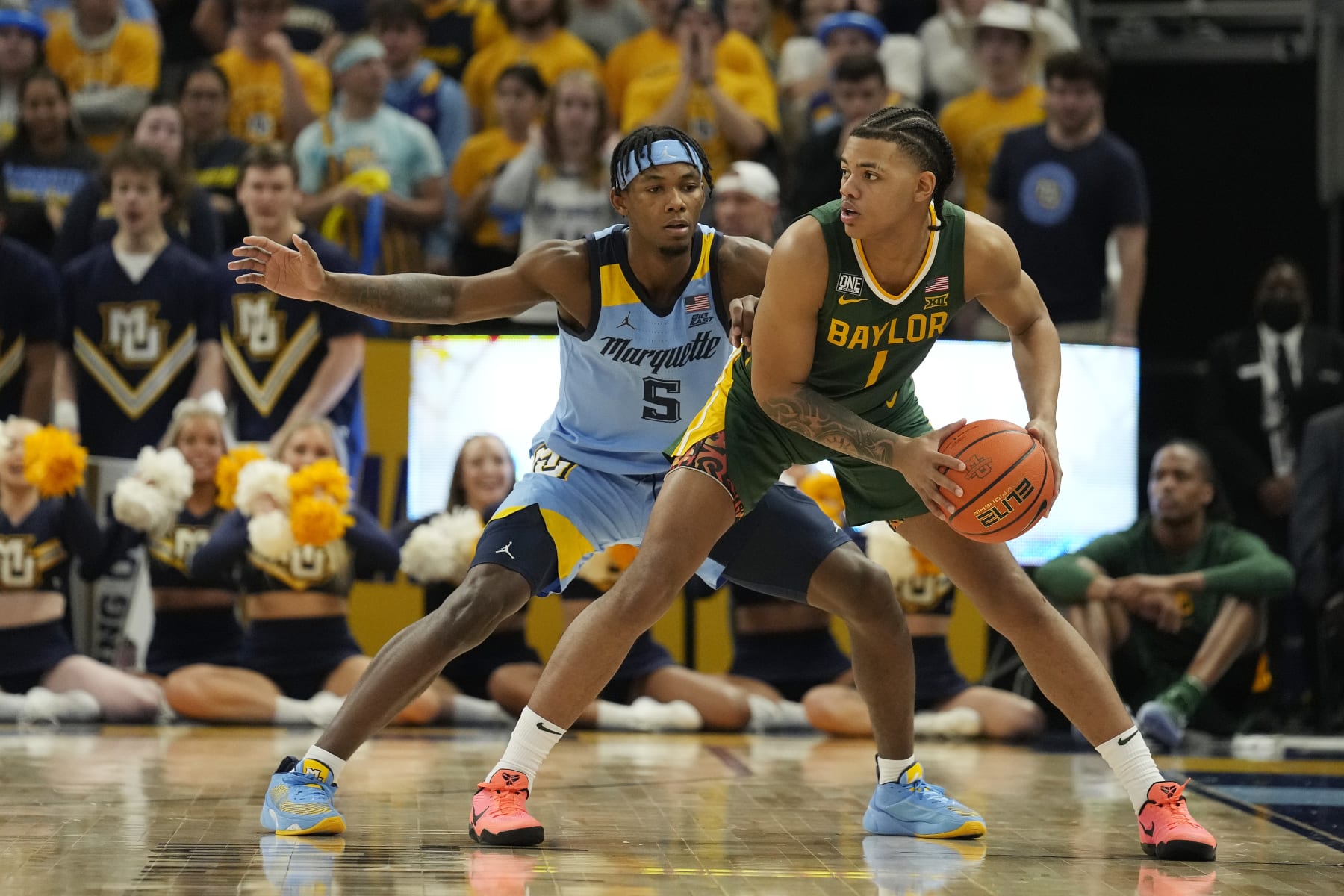
NBA scouts started the season with certain expectations. Midway through December, we're learning that some of their views remain the same, while others are evolving.
Stock watch takes into account consensus feelings on prospects who've made signifiant impressions or changed minds.
We included most of the 2023 draft's big names but also others who've either surprised with breakouts or divided scouts with mixed play.
Our list of Freshmen to Monitor focuses on newcomers who've caught scouts' attention but haven't put together a large enough sample size of production to make a convincing 2023 draft case just yet.
Amari Bailey (UCLA, PG/SG, Freshman)
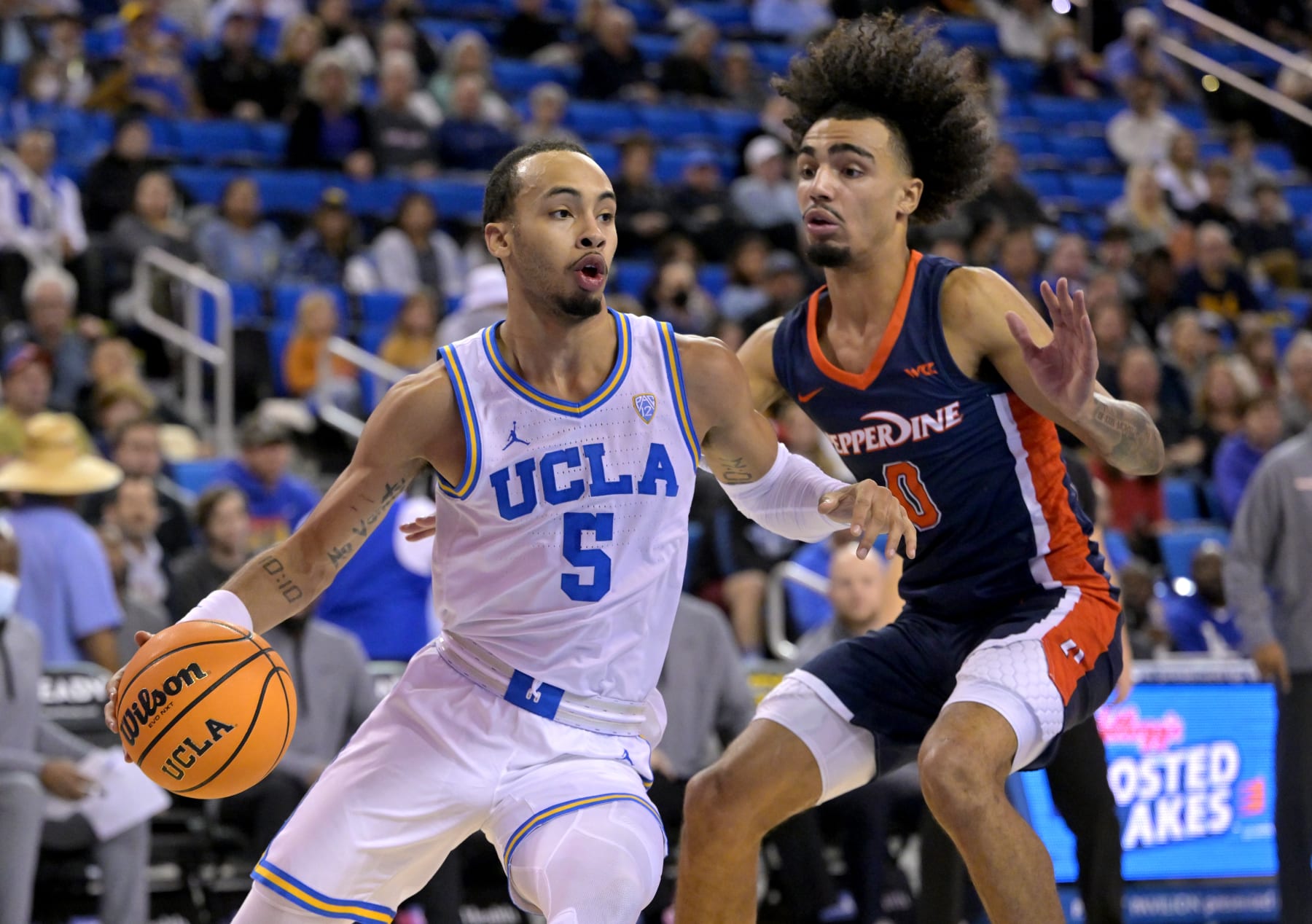
Stock update: Mixed evalutions
Amari Bailey has become an interesting case of a productive, efficient freshman who hasn't convinced scouts that he a sure-thing strength for the NBA.
In terms of what skills should carry over, his passing has stood out most. Bailey is forced to play off the ball next to Tyger Campbell, so the high assist rate isn't there. But he's delivered enough savvy live-dribble passes off ball screens, penetration and transition that highlight his vision and feel for the game for translatable ball-moving and secondary playmaking.
He's made 13-of-27 half-court pull-ups (10 in mid-range), so off-the-dribble shooting is likely his most useful scoring weapon for the next level.
Bailey doesn't possess a great deal of blow-by burst, and he's only 7-of-21 from three through 11 games. Playing off the ball, he's struggled as a catch-and-shooter, specially when guarded (0-of-8).
Two-way IQ and versatility are Bailey's selling points to NBA teams. He's played unselfishly alongside veterans, taking mostly what the defense gives up (49.5 percent FG). And that all gives him some appealing role-player potential as a connector at the next level.
For NBA teams, the question is whether he has the handle, wiggle and creation to be used on the ball and if he offers enough value spotting up and cutting. So far this season, he's turning the ball over on 25.9 percent of his ball-screen possessions and 40.0 percent of his isolation possessions.
Emoni Bates (Eastern Michigan, SG/SF, Sophomore)
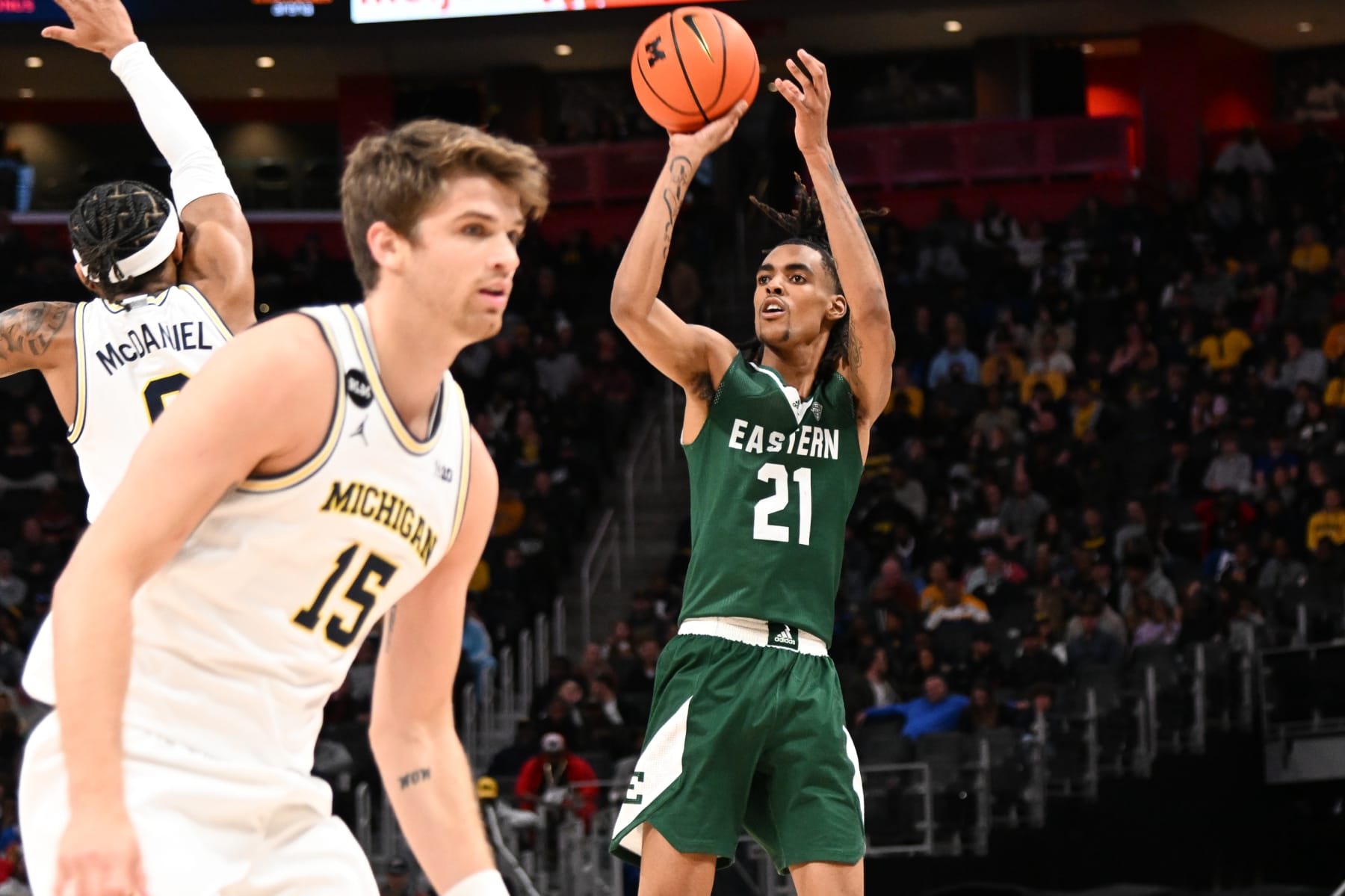
Stock update: Mixed evaluations
Putting up serious numbers at Eastern Michigan, Emoni Bates is trying to win back scouts who lost interest after his poor freshman season at Memphis.
A weak strength of schedule and his high usage naturally cast a cloud over his 19.4 points per game. Still, Bates' signature shot-making has returned, and it's his ability to drill deep threes and tough dribble jumpers that remains his primary selling point.
He's already made an impressive 28 pull-ups in the half court, 16 of which have come from behind the arc. Bates remains more effective creating space into pull-ups and step-backs than he is separating into drives.
His lack of explosiveness remains obvious and problematic, as he relies heavily on hitting low-percentage shots.
From an NBA projection standpoint, he seems best suited as a top option for a second unit that gives him more freedom to handle and hunt. He's not a strong off-ball scorer, making just 30.6 percent of his catch-and-shoot chances and offering little as a cutter.
Bates has 11 assists and 22 turnovers through 10 games, with his value now and later revolving almost exclusively around self-creation scoring. And the fact that Eastern Michigan lost eight of its first 10 games won't help Bates' stock.
Concerns over his bad shot selection, athleticism/length for finishing and defending and his impact on winning will presumably take Bates out of the first-round discussion. In the second round, however, he should wind up looking enticing to some team that sees a scoring or shot-making specialist to bring off the bench.
Anthony Black (Alabama, PG/SG, Freshman)
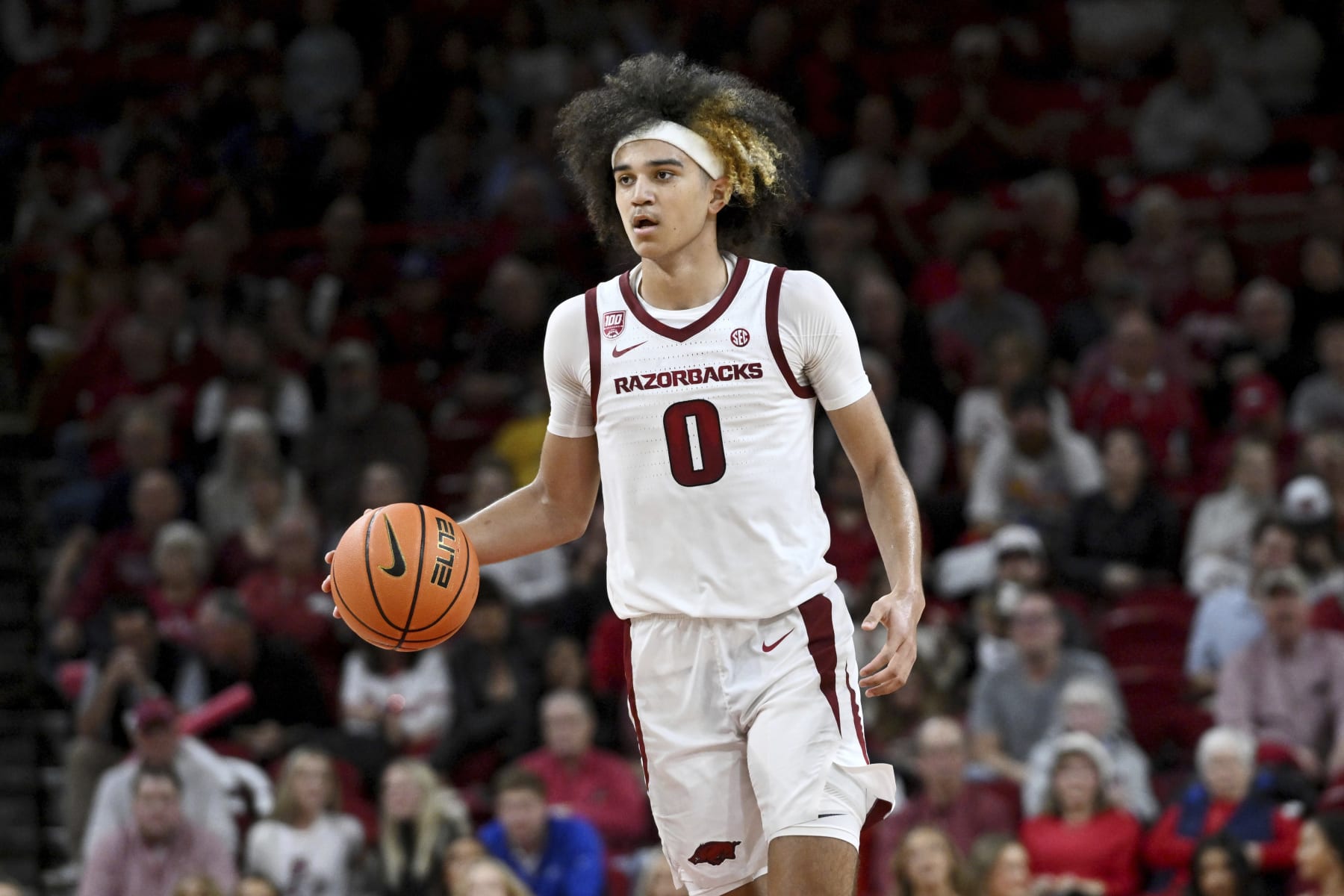
Stock update: Trending toward top 10/lottery
Lottery teams have recently coveted the jumbo playmaker archetype that Anthony Black continues to embody.
Similar to top-10 picks Dyson Daniels, Scottie Barnes and Franz Wagner, Black is building a case around his 6'7" ball-handler size, facilitating ability and defensive tools/instincts.
Though athleticism isn't a strength, the Arkansas freshman has effectively used change of speed to get to his spots, his height for passing and his body control to finish. He's also surprised with how well he's shot from outside (50.0 percent off the catch and 40.7 percent from three).
Black has also shown he can make a considerable defensive impact by pressuring the point of attack with his size, foot speed and anticipation. He has the potential to smother guards, cover multiple positions and consistently make plays on the ball (1.8 steals per game).
Limited burst, self-creation and pull-up shooting skills raise some questions about his scoring at the next level. Still, he was able to put up consecutive 26-point games in Maui, while his versatility at both ends allows for him to influence games without scoring in volume.
Ricky Council IV (Arkansas, SG/SF, Junior)
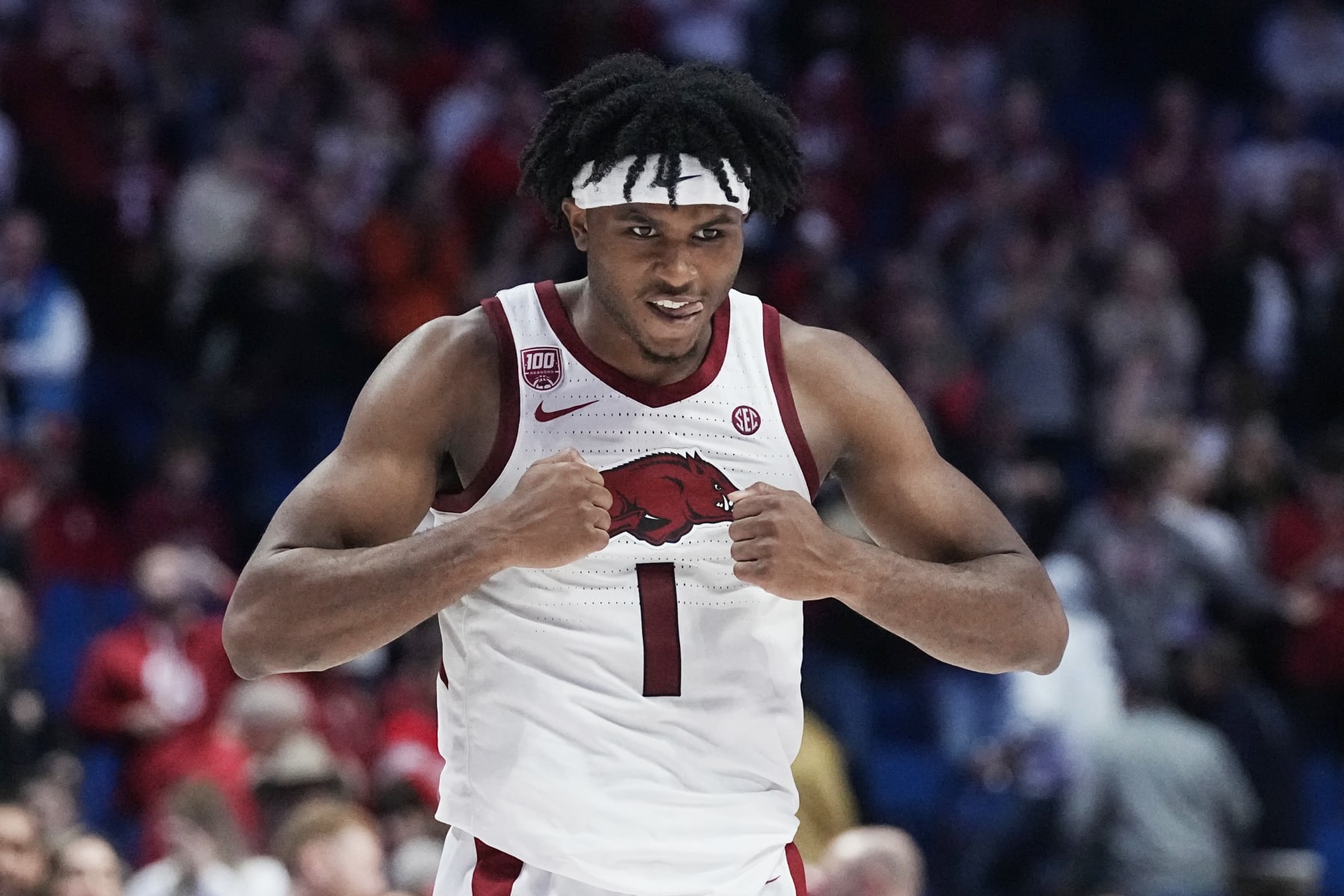
Stock update: Legitimacy rising
Ricky Council IV's hot start is starting to looking more real to NBA scouts by the week. Coming off a 26-point, five-assist game against Oklahoma, Arkansas' leading scorer has emerged as a legitimate breakout prospect with his 6'6" size, special athletic ability, handles and footwork for creation and tough shot-making skill from three levels.
Explosive bounce and coordination have led to highlight finishes (72.9 percent at rim)—some off his explosive leaping and others via acrobatic adjustments. While he's been an easy-basket weapon for Arkansas, he's also generating his own offense on the secondary break and in the half court with quick-dribble moves, burst off the bounce and pull-ups and floaters.
He's had more success attacking the basket than settling from outside, where he's only making 1.1 threes (31.4 percent) in 36.2 minutes per game. He's shooting just 33.8 percent on his jump shots, so that will be an area scouts monitor.
Still, for a wing who has such an easy time scoring in transition, Council has looked threatening enough on dribble and spot-up jumpers, blowing by defenders in the half court and finishing takes with his runner and layup package.
His 2.9 assists per game just feel like a bonus and a reflection of his ability to make things happen with the ball. Scouts' confidence in Council should gradually rise if he continues to showcase takeover offense (four games with at least 22 points) and an improved comfort level play-finishing off the ball (82nd percentile on spot-ups, 5-of-6 on cuts).
Gradey Dick (Kansas, SG/SF, Freshman)
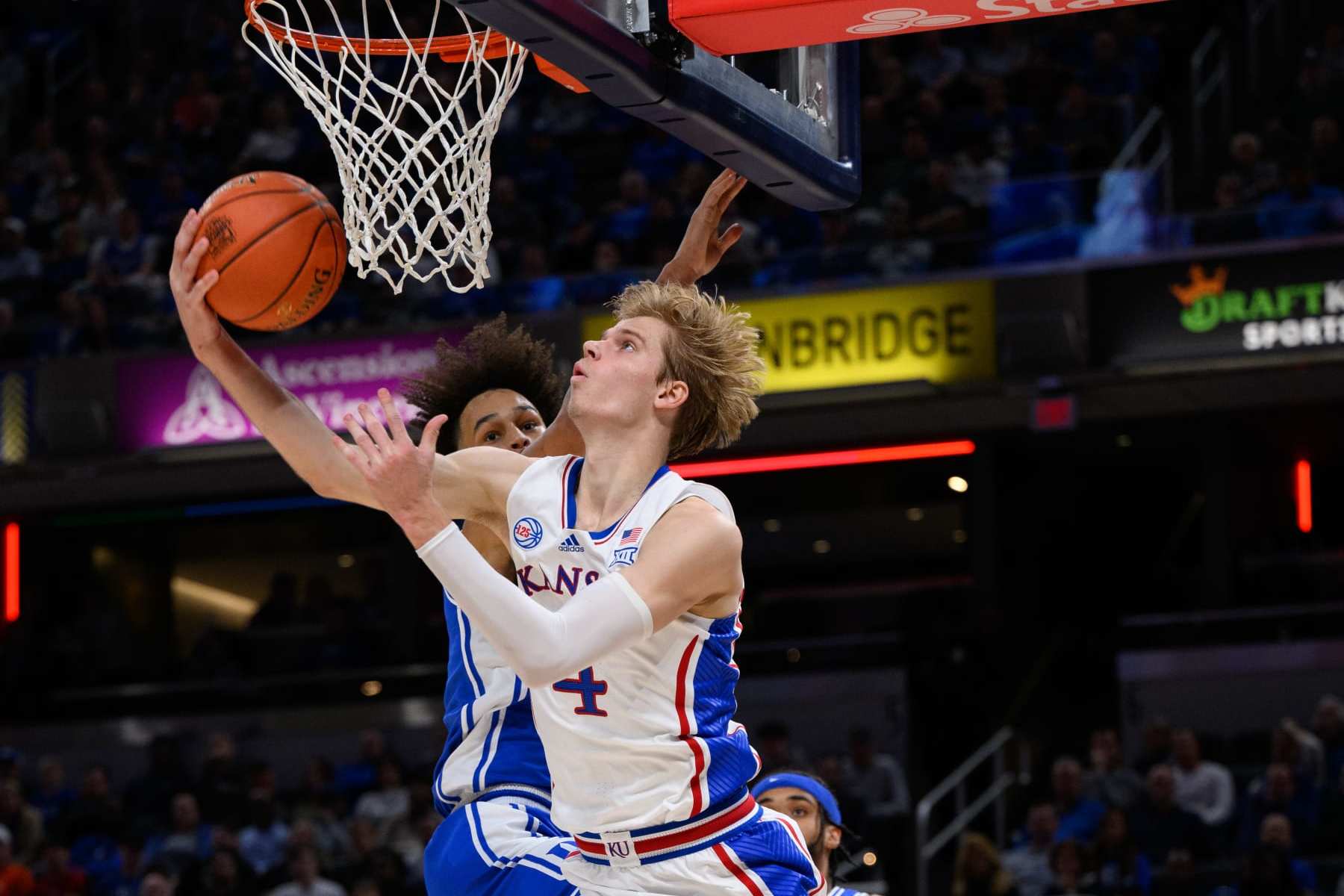
Stock report: Trending toward late lottery
The combination of 6'8" size and convincing shooting has created a perceived high NBA floor for Gradey Dick. At 46.6 percent on 5.8 three-point attempts per game, he's been consistent from deep with concise mechanics, a high release and minimal dip. His fit at the next level has become easy to picture.
But open-floor scoring, off-the-dribble shot-making, athletic finishes and tough defense hint at Dick offering more versatility and upside than just a shooter.
He's made 7-of-10 spot-up drives, 11-of-23 pull-ups and 62.5 percent of his attempts at the rim. Dick has shown IQ and poise with fakes into escape-dribble jumpers, and he's been impressive with his ability to make adjustments or use body control on finishes. Defenses also have had to find Dick early in shot clocks, as he's already hit 11 transition threes.
Though not the most adept self-creator or playmaker, his skill set and mentality are equipped for scoring within his team's offensive sets/flow.
He's also demonstrated plus intangibles, specifically his IQ (311 minutes, 10 turnovers), competitiveness and fearlessness to take and make tough shots late in tight contests.
Dick's game might not scream NBA All-Star, but he's starting to look like one of the safest picks in that Nos. 8-14 range once the better creators or more explosive athletes are off the board.
Kyle Filipowski (Duke, PF/C, Freshman)
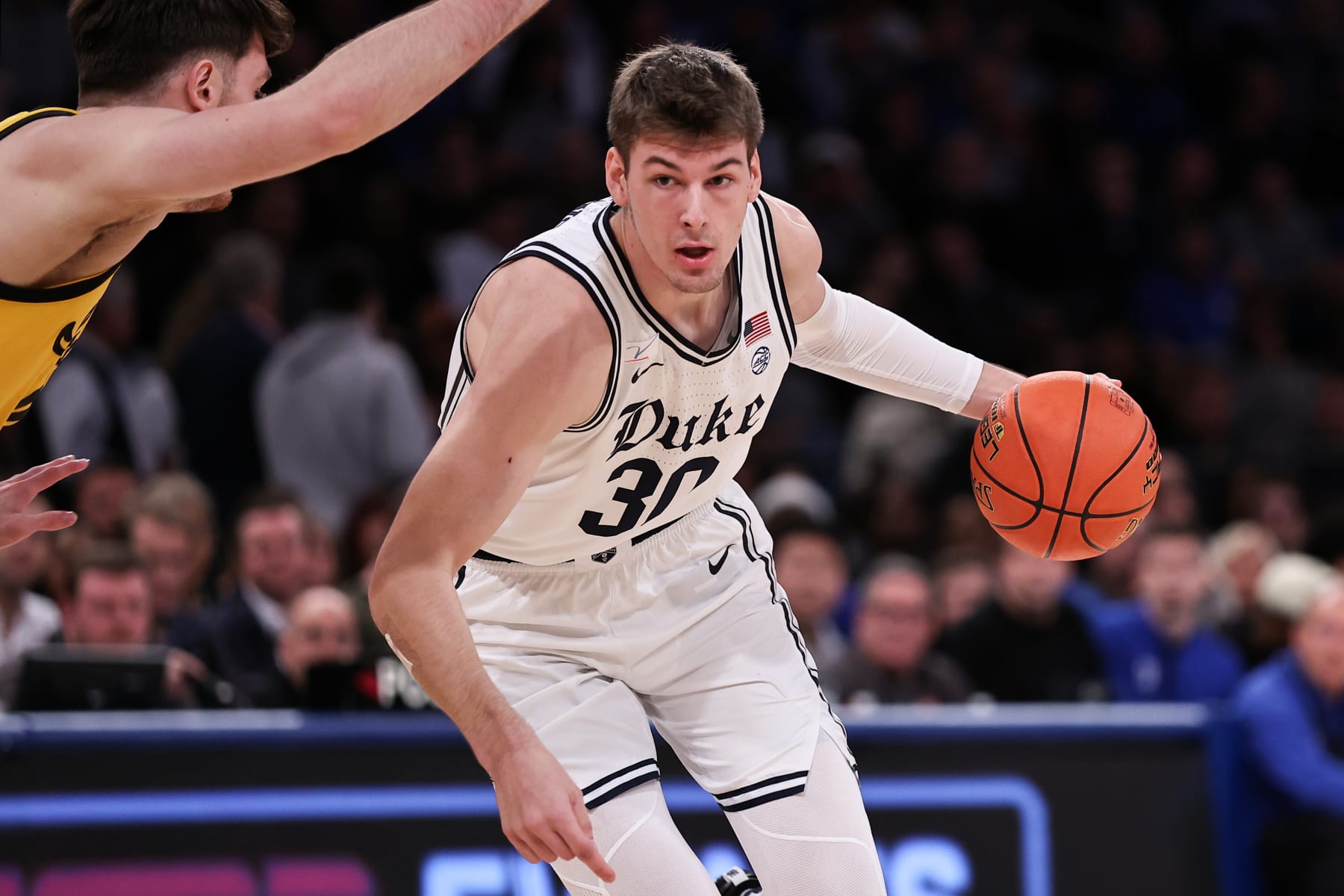
Stock update: Consensus top 20
Kyle Filipowski has emerged as Duke's most reliable player early, an interesting development after he struggled through the heavily scouted Nike Hoop Summit and Jordan Brand Classic last spring.
His face-up scoring versatility has been an obvious draw for NBA teams, with the 7-footer having already made 14 threes and shown signs of being able to put the ball down and finish with touch and coordination on the move. His ability to change direction with behind-the-back dribbles and spins creates a key advantage for Filipowski against bigs.
Still, a lack of explosion has spoiled some of his pretty moves or finishes in traffic (combined 13-of-36 on putbacks and rolls).
He has been more efficient in the post with his footwork and shot-making ability over both shoulders.
Defensively, Filipowski has made some impressive reactions and reads that have led to an outstanding 3.3 steal percentage early. On the other hand, he's mostly a non shot-blocker (3.0 block percentage), and the majority of NBA 4s figure to have the speed and quickness edge against the 230-pound Filipowski.
But he's still flipped his draft-stock arrow back up, given scouts' tempered expectations entering the season. His combination of ball-handling, back-to-the-basket offense and rebounding has put him firmly in the first-round mix.
Keyonte George (Baylor, SG, Freshman)

Stock update: Lottery prospect
Scouts are going to put more stock into Keyonte George's creation flashes, made jumpers and passes than his percentages and high turnover rate.
He's producing (15.7 points per game) with a convincing level of fluidity and confidence attacking defenses, shooting off the dribble and firing from NBA range. A 30.7 percent usage rate and tough shot selection are mostly behind his 39.8 field-goal percentage and 32.9 three-point mark.
George has had an easy time getting off looks using change of direction, footwork and rise-and-fire timing. He has an extra turbo gear he can activate in the lane to beat shot-blockers to the rim. And he's shown the necessary floater touch, shot-making skill and range to connect on any given attempt.
Known for scoring out of IMG, the 6'4" freshman has also averaged 4.2 assists per game for Baylor, demonstrating passing IQ and ball-screen vision that suggest he'll be capable of adding legitimate playmaking value at the next level.
Defensively, George has had some excellent sequences, sliding his feet and beating ball-handlers to the spot, anticipating moves or pressuring the point of attack with energy. He's made some impressive off-ball reads to take charges or jump passing lanes.
As long as the aggression, fearlessness and difficult shots don't reflect too negatively on his awareness or impact, George is looking like a lottery lock and surefire NBA starting combo.
Coleman Hawkins (Illinois, PF/C, Junior)
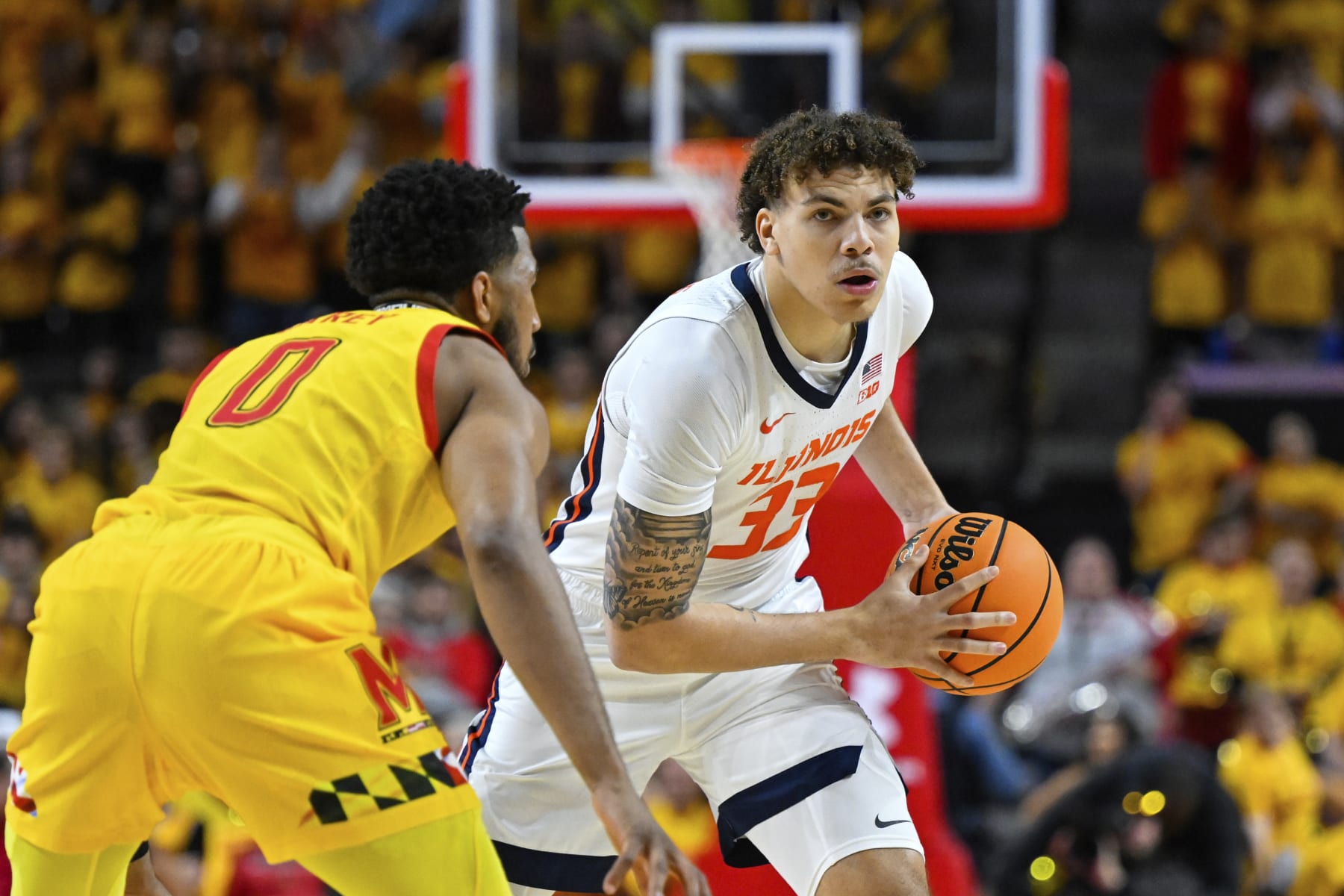
Stock update: Popularity rising
Despite a single-digit scoring average for the third consecutive season, Coleman Hawkins has cracked NBA radars by improving his shooting and passing to create a specific, coveted type of versatility for a big.
Making 1.1 threes and dishing out 4.2 assists per game, he's blossomed into a 6'10" stretch 4 or 5 who can handle the ball, facilitate for teammates and move well defensively (1.4 blocks, 1.1 steals).
He's spent time this year bringing the ball up, and Illinois uses him in the middle of opponents' zones because of his size and passing.
His playmaking has been more believable then his jump shot, given his 32.4 percent three-point rate and 57.9 percent free-throw rate. Hawkins still has more convincing to do with his jumper.
But his range has gradually improved through three seasons, and NBA teams are bound to see a fit if he's a catch-and-shoot threat who adds value as a passer and switchable defender.
Scoot Henderson (G League Ignite, PG, 2004)
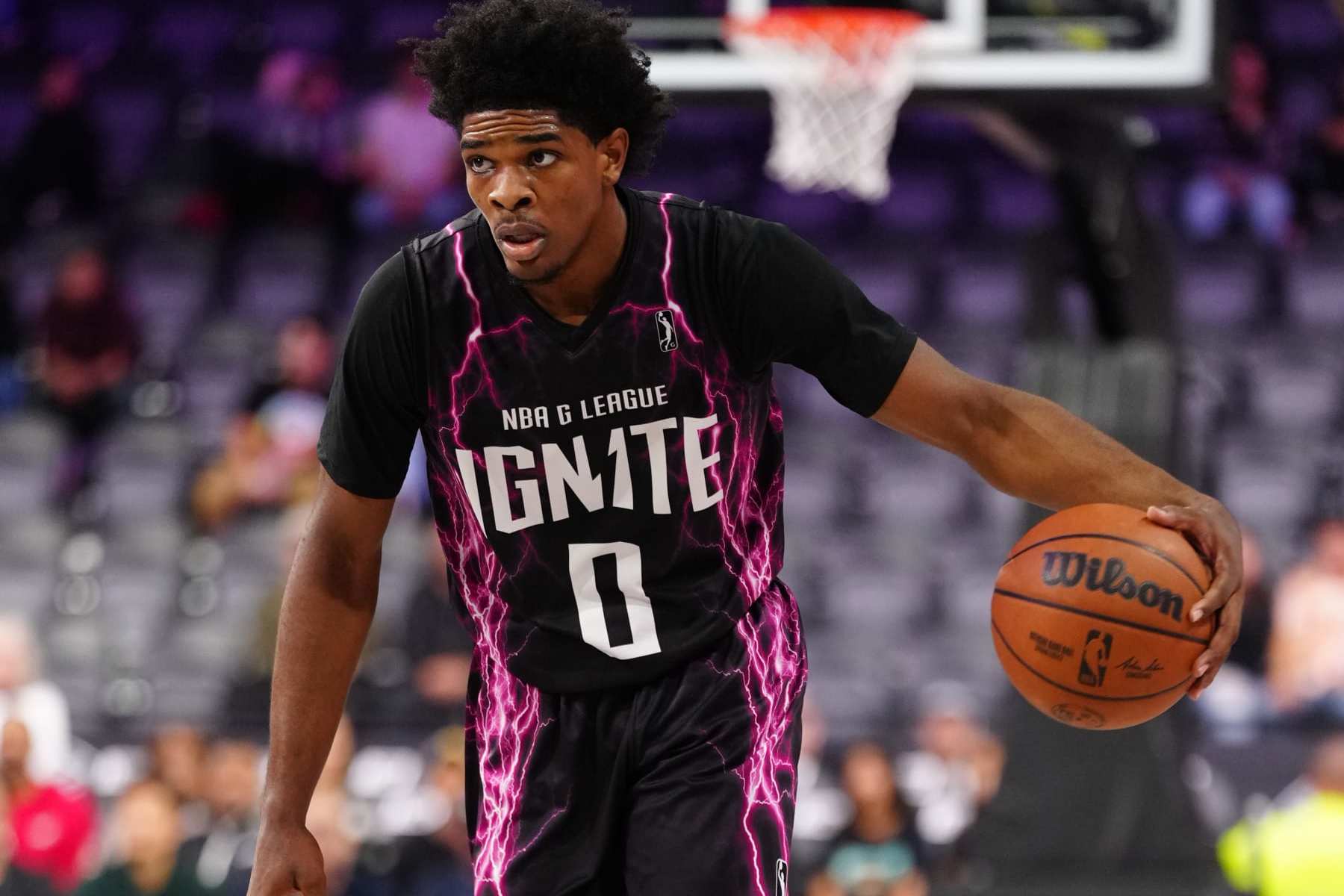
Stock update: Heavy No. 2 overall favorite
A broken nose has kept Scoot Henderson out of action for the last three weeks. But after averaging 24.2 points and 7.2 assists on 8-of-16 from three through his first five games, he probably wouldn't need to suit up again to convince scouts he's the draft's No. 2 prospect.
They seemed confident after his 28-point effort and win against projected No. 1 pick Victor Wembanyama in Las Vegas in October. Since then, he'd been lighting up G League defenses with a combination of signature burst, ball-handling for change of direction and a tough pull-up game.
Highly persuasive explosiveness and sharp dribble moves suggest defenses will continue to have trouble containing him off the dribble next year in the NBA. While he entered the season with questions about his shooting, he's flashed improved range early, and he's always been dangerous separating and rising in the mid-range.
With a 34.0 percent assist rate compared to last year's 23.3 percent, he's generated more offense this year by playmaking with ball-screen passes and by using his gravity.
There are times when Henderson does get overzealous, almost showing too much confidence in his ability to make contested jumpers or flashy dimes. He can have trouble resisting the urge to force highlight shots or plays. But he's also Ignite's primary engine, with a green light and passion that most NBA teams will see as a plus.
Regardless of what happens the rest of the way with Henderson's availability or three-point numbers, he appears to offer too much translatable offense and star power for the draft's No. 2 team to pass on.
Jett Howard (Michigan, SG/SF, Freshman)

Stock update: Trending toward top 20
Seemingly overlooked last year in the 2023 draft discussion while playing alongside potential lottery picks Keyonte George and Jarace Walker at IMG, Jett Howard has been an obvious standout to scouts with his 6'8" size, shooting versatility and finishing.
Consistency has helped his shot-making feel extra convincing, as the freshman has hit multiple threes in every game and at least 40.0 percent of his long-range attempts in six of nine contests.
More than just a stationary shooter, Howard has connected on 5-of-12 off-screen jumpers and 8-of-19 pull-ups. He's most effective off the ball using movement to create opportunities, but we have seen a small sample size of self-creation off the bounce (4-of-4 isolation) with his ball-handling into tough dribble jumpers and runners (6-of-9).
Despite not offering significant playmaking, his 21 assists to eight turnovers highlight high basketball IQ and quick processing as a passer. Howard demonstrates patience, poise, timing and anticipation in different areas, whether it's as a finisher on the break or defender. He doesn't allow others to speed him up while he's attacking the basket, showing the ability to decelerate, read his man and use Eurosteps or body control. Blocking 1.2 shots per game, Howard also has a nose for the ball and a knack for using his tools to make plays.
The unlikelihood of offense running through him suggests he doesn't have the star-caliber upside of a top-five to top-10 pick. But given his translatable skill set and perceived easy fit, Howard is looking like a legitimate option for teams in the late lottery to mid-first-round range.
GG Jackson II (South Carolina, PF, Freshman)
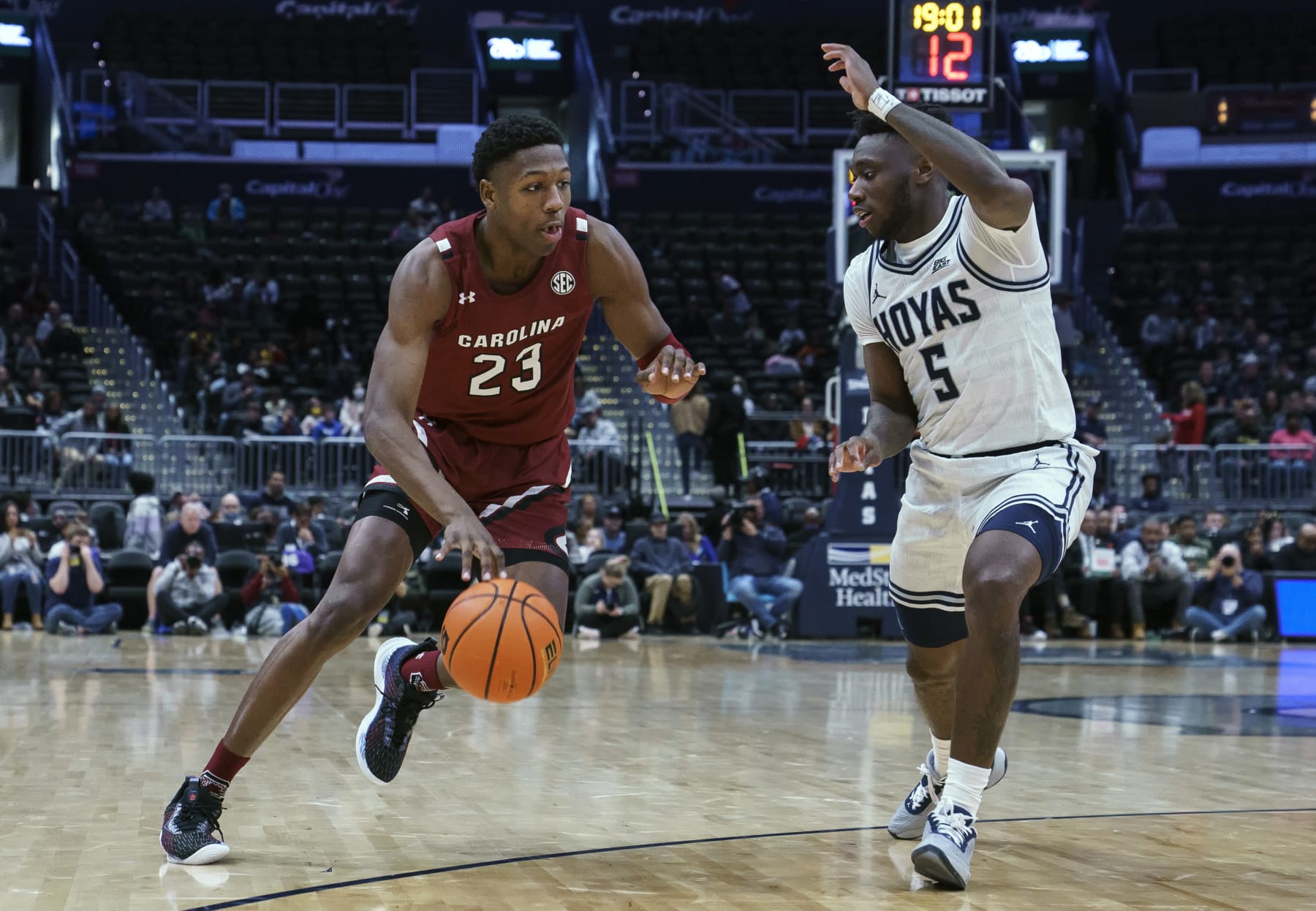
Stock update: Wild-card lottery prospect
Expected to be the NBA's youngest player entering the 2023-24 season, GG Jackson II ranks second among freshman in scoring.
His comfort level around the perimeter pops first, with the 6'9", 18-year-old forward making 1.6 threes per game (36.6 percent) flashing impressive ball-handling and body control on takes to the rim. With a power forward's size and frame, he has spent the most time spotting up (31.4 percent of offense). Showing confidence in his jump shot, Jackson doesn't hesitate on catch-and-shoot chances, and the rhythm he demonstrates on some of his off-the-dribble moves, both into drives and pull-ups, suggests he's closer to being a big wing than an actual big.
His size and guard skills can create mismatches, and NBA coaches will value his potential to stretch the floor, attack bigs off the bounce and push in transition. Jackson also plays with the type of passion and effort that should serve him well for an energizer role, if that's something he'll be forced to fall back into because of translatability issues concerning creation, efficiency or defense.
Converting 46.6 percent of his two-point attempts, he lacks a degree of explosion. And as enticing as the early shooting and face-up flashes have been, he's just 2-of-14 out of isolation and 9-of-23 on post-ups. We've seen more questionable decisions and mishaps than good passes, as he's totaled 26 turnovers to just seven assists all season. Tunnel visions causes him to miss open teammates.
Low rebounding (11.8 percent) and shot-blocking (3.4 percent) rates also raise questions about his physical and defensive presence around the basket.
Maxwell Lewis (Pepperdine, SG/SF, Sophomore)
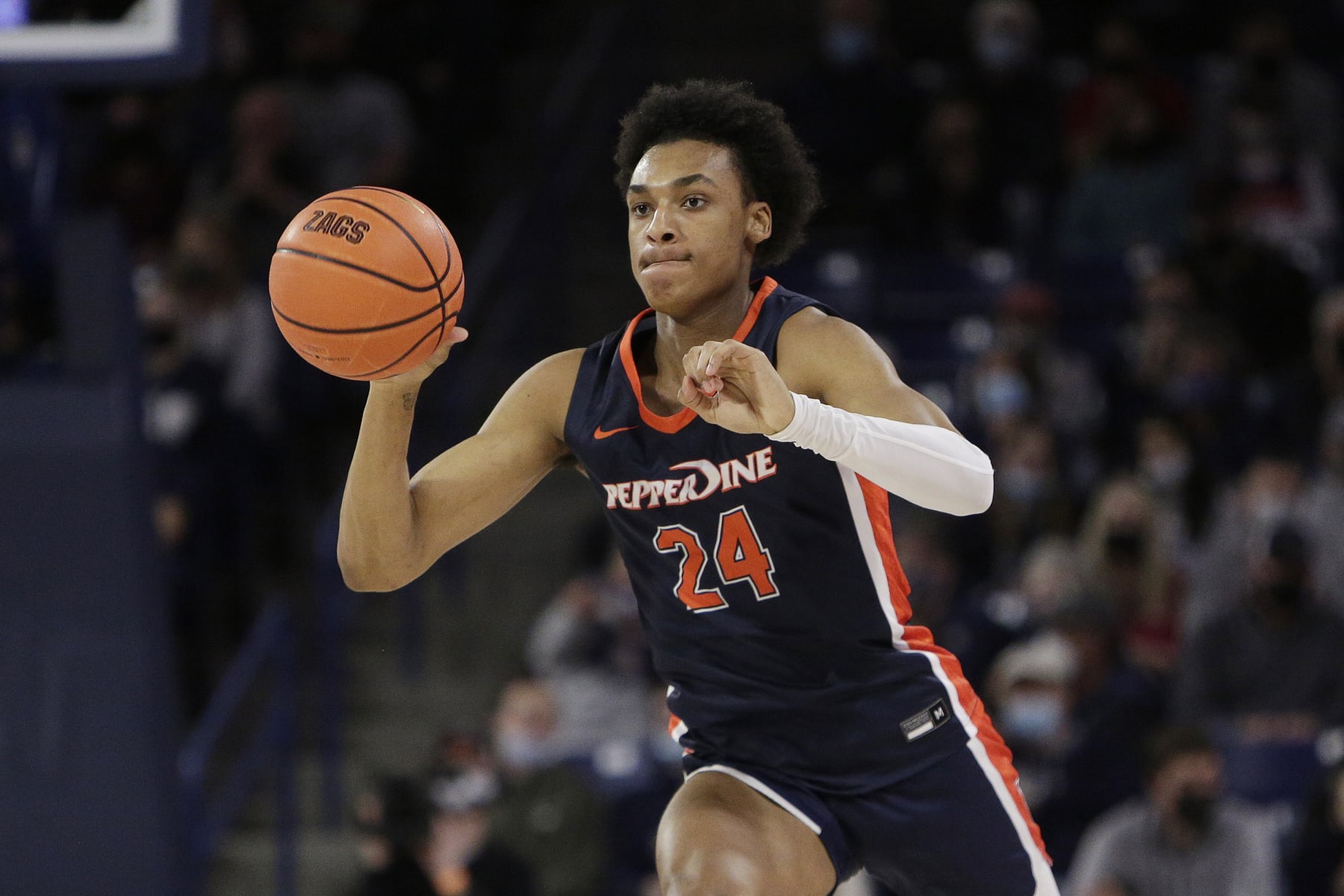
Stock update: Trending toward first round with room to keep rising
While scouts remain eager to see Maxwell Lewis face stiffer competition, against Pepperdine's weak schedule, his physical profile, production, efficiency and three-level scoring skills scream NBA wing.
Shooting 60.8 percent from the field, 68.3 percent inside the arc and 50.0 percent on 4.7 three-point attempts per game, Lewis has had remarkable success converting transition opportunities (97th percentile), catch-and-shoot jumpers (59.3 percent), pull-ups (42.4 percent), post-ups (11-of-15), runners (4-of-8) and finishes around the basket (87.5 percent).
At 6'7", he's demonstrated smooth, improved creativity and shot-making versatility off the catch, dribble, turnaround jumpers and one-legged releases.
Lewis was quiet against Pepperdine's lone noteworthy opponent in UCLA, finishing with just eight field-goal attempts in 31 minutes. He isn't explosive and sometimes needs to turn his back to his man if he has trouble turning the corner. A pair of conference games against Gonzaga should give us a better read on Lewis' effectiveness in creating separation against other NBA prospects.
In the meantime, Lewis has everything working skill-wise and appears to have suitable tools, fluidity, scoring versatility, shot mechanics and feel to continue earning buckets at the next level.
Dereck Lively II (Duke, C, Freshman)
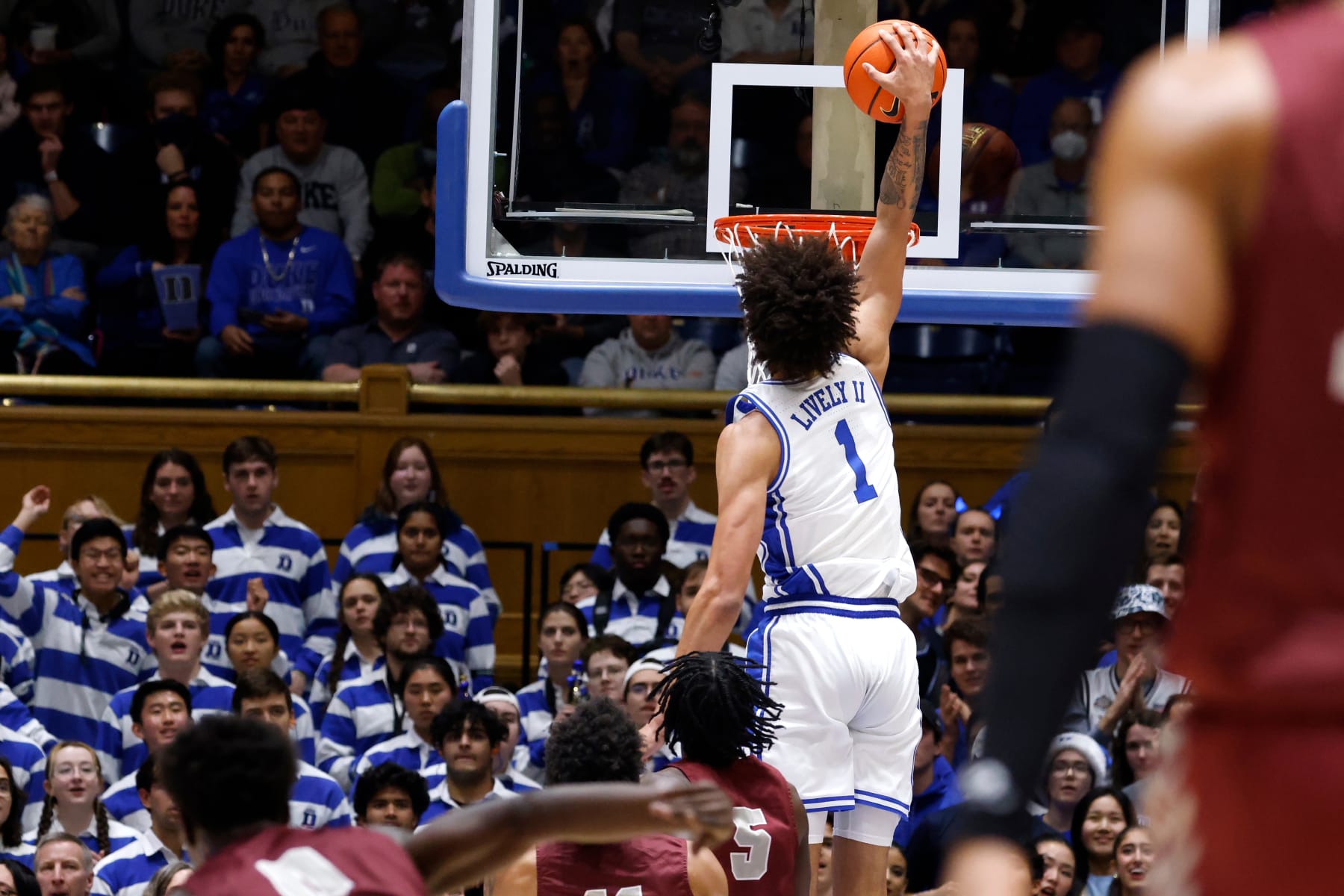
Stock update: Trending downward
Becoming more involved for Duke over the last four games, Dereck Lively II has started to give scouts a reason to value his outstanding physical profile.
He's seeing more easy-basket chances running the floor, crashing the glass and rolling to the hoop off screens. In those situations, Lively's finishing potential—fueled by a massive wingspan—becomes evident.
That length has also shown defensively, where he's blocking 12.5 percent of opponents' two-point shots.
However, Lively hasn't done anything to differentiate himself from the common one-dimensional finisher-shot-blocker archetype. He has yet to make a jump shot or post-up basket. There have been instances in which he doesn't look strong with the ball going up. And he's averaging 6.2 fouls per 40 minutes, not always looking the sharpest in terms of his reactions. His high center of gravity and thin frame (7'1", 230 lbs) have also been exposed guarding the post, where opponents are shooting 53.8 percent against him.
With most NBA teams already set at center, and Lively offering no versatility or differentiator skill, he won't be many general managers' Plan A. He's looking more like a late first- or second-round pick unless he suddenly starts making threes or a more obvious impact on games.
Brandon Miller (Alabama, SF, Freshman)
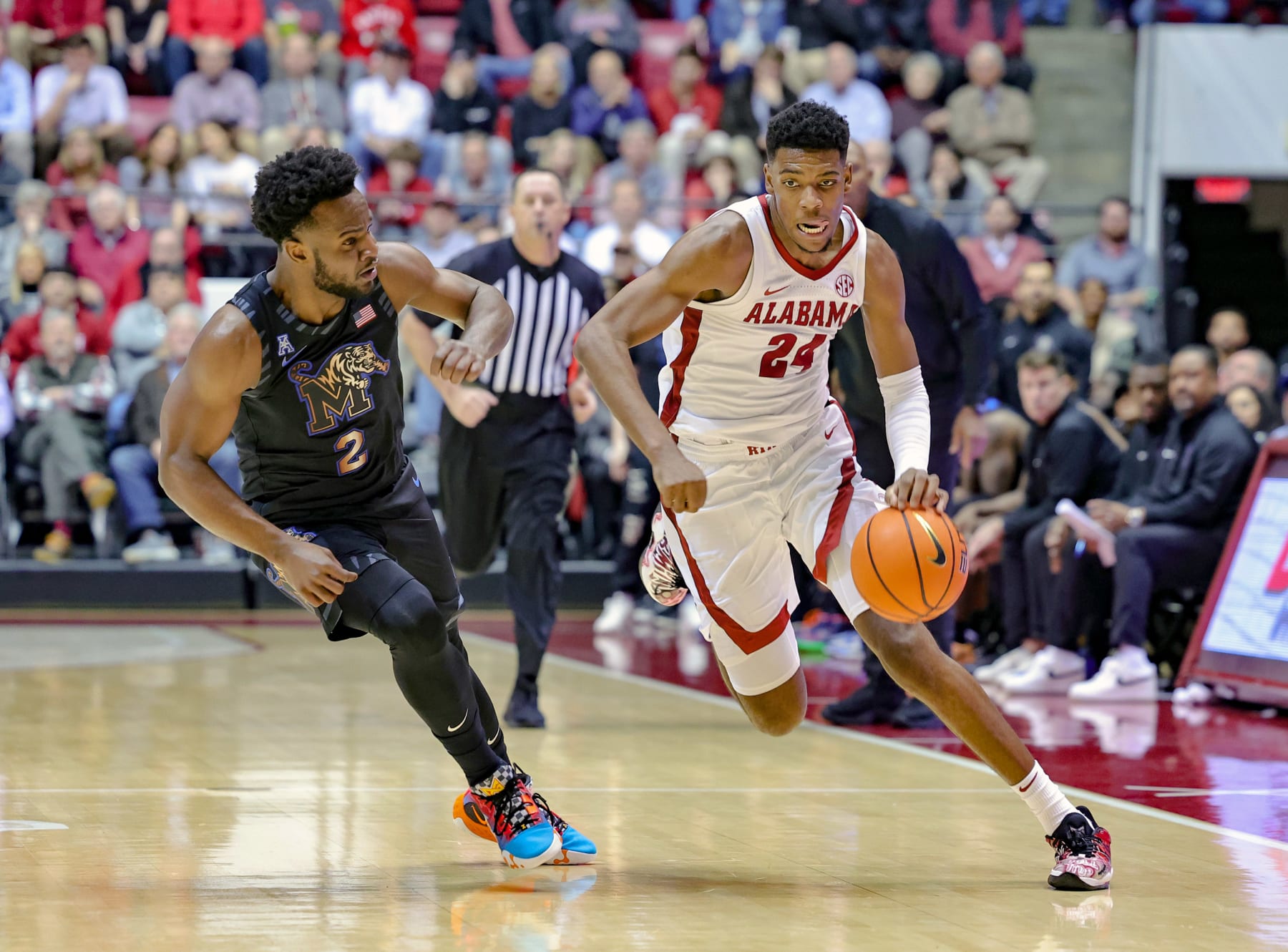
Stock update: Lottery projections with mixed evaluations
Brandon Miller's play has been a big topic in scouting circles early, as he's leading all freshmen in scoring at 18.5 points per game.
Hot shooting has been behind his production and draft hype. Making 3.1 threes per game at a 43.7 percent clip, he has been lethal off the catch (46.2 percent), particularly when left open (11-of-15).
Otherwise, he's leaned mostly on putbacks, dribble handoffs and transitions for the rest of his scoring.
Miller has struggled in creation situations, both with finishing and turnovers. As a pick-and-roll ball-handler, he's coughed the ball up 34.3 percent of the time while shooting 3-of-20. He's 2-of-12 out of isolation, often settling for tougher pull-ups.
Shooting an ugly 34.8 percent inside the arc and 39.4 percent at the rim, Miller suffers from a lack of explosiveness for getting to the rim and converting in traffic.
He has made some flashy passes and exciting defensive plays that suggest his value won't be fully dependent on scoring production.
His NBA pitch revolves around his positional size, shot-making and his potential to throw a few heady assists each night and become a plus wing defender. That combination alone could be enough for late-lottery teams.
Turning 21 near the start of next season, he is the same as most sophomores, so that does give him a little less margin for error or perceived room for growth.
Kris Murray (Iowa, PF, Junior)
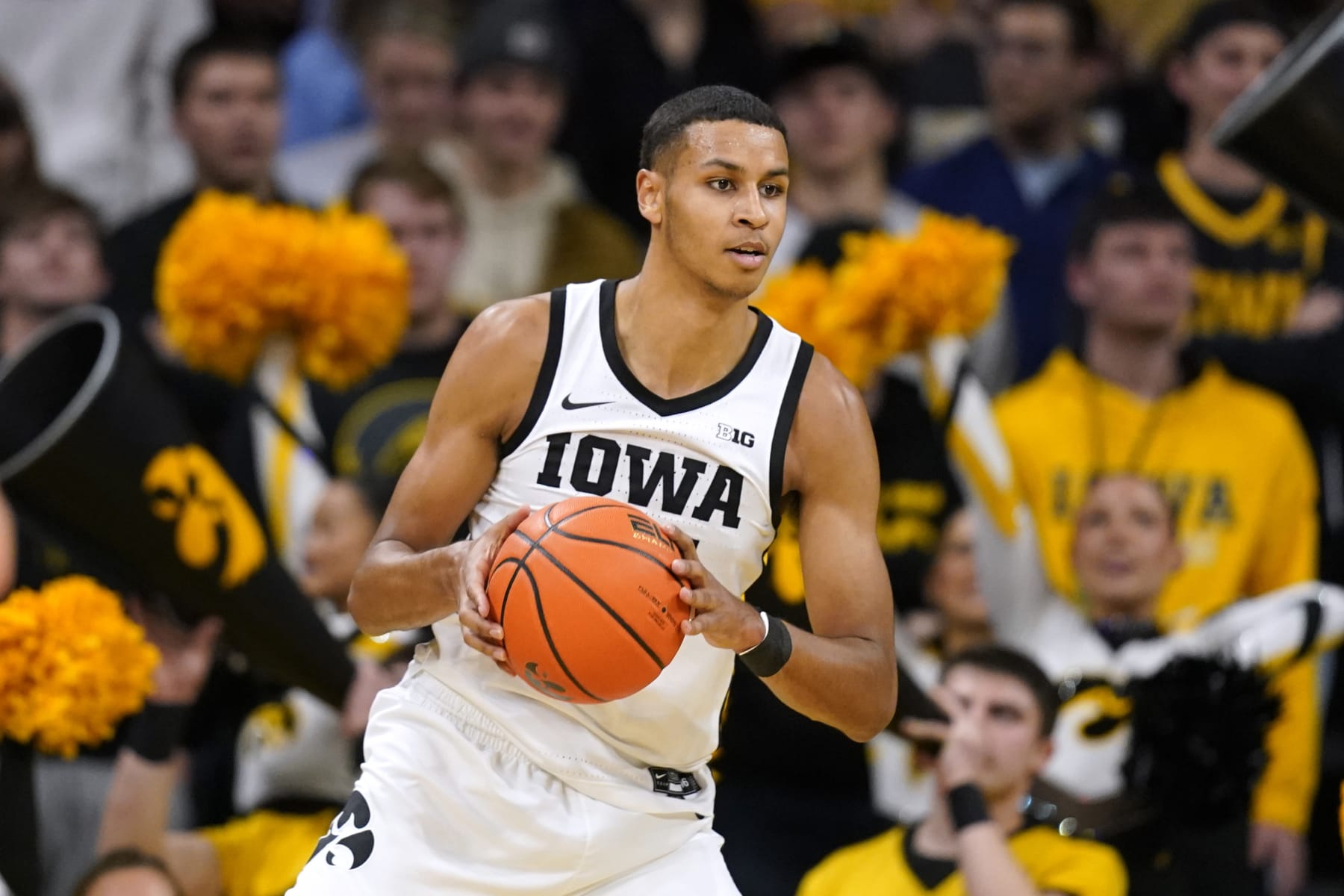
Stock update: Potential first-rounder
Though a poor game against Duke raised some questions about Kris Murray's breakout, he still has scouts' attention.
They'll just have to wait a few more weeks as he recovers from a foot injury.
With Keegan Murray gone, Kris' extra usage has brought out his scoring versatility, with off-ball offense that seems translatable. At 6'8", 220 pounds, Murray has averaged 19.4 points per game by making catch-and-shoot threes, running the floor, cutting and crashing the offensive glass.
He hasn't flashed the type of off-the-dribble shooting or creation that his brother did last year. And he's not the same level of shot-making threat running off screens. But with motor, IQ, body control and touch, Murray does have a knack for seeking out and converting scoring opportunities without needing many ball-handling reps.
As a featured player, he's most effective improvising in the post.
NBA teams aren't likely to detect much upside with the 22-year-old forward. But they're starting to entertain the idea of Murray becoming useful off-ball weapon, active rebounder and high-IQ passer/defender. Continuing to make over two threes per game seems essential for the junior to generate widespread first-round consideration.
Tyrese Proctor (Duke, PG/SG, Freshman)
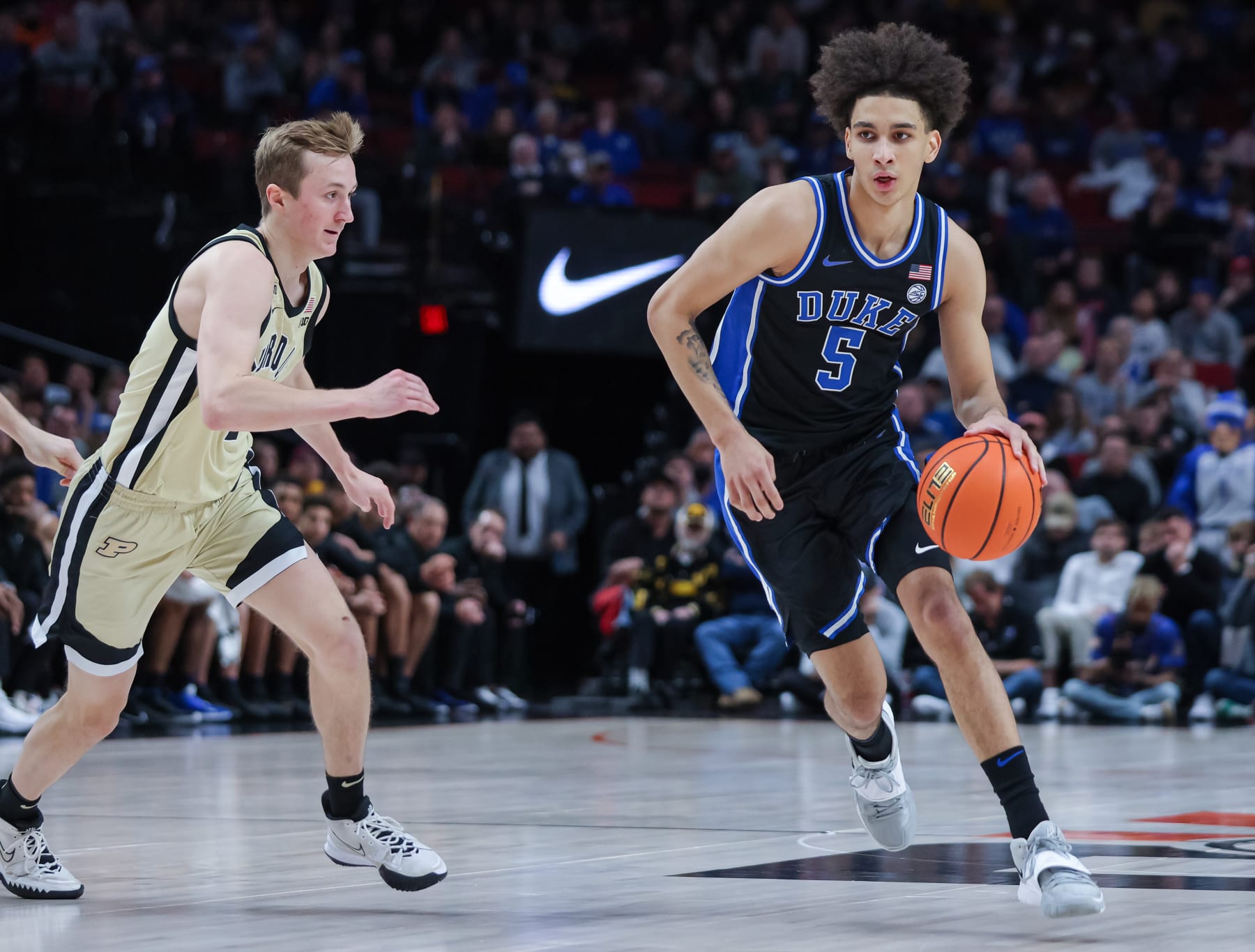
Stock update: Re-gaining steam to potential first-rounder
After a slow start, Tyrese Proctor has played with a different, visible level of confidence and decisiveness lately. It's becoming easier to see why teams will show interest and patience, with the 6'5", 18-year-old combo guard starting to flash a more balanced mix of self-creation potential, shot-making and passing IQ.
Without an exciting burst for blowing by defenders, shooting will still need to become a plus for Proctor. Scouts remain in the process of evaluating his shot, which has fallen more frequently over the last four games (6-of-14 3PT). He's also executed a handful of pull-ups and step-backs that highlight ball-handling moves and footwork to separate and off-the-dribble shot-making.
Playing alongside Jeremy Roach, Proctor has split time on and off the ball. In pick-and-rolls, he does a nice job of using pace/hesitations to keep the guard defender on his back and the big backing up. Having no explosion in the lane hurts, but he does have touch on his floaters, runners and short jumpers.
While Proctor isn't the type to create something out of nothing often, he can identify the right times to attack and get to the paint for uncontested layups, which he's able to finish with either hand.
His passing IQ is evident as well, though he may not ever be elusive enough to be a team's primary playmaker.
At this point, Proctor's versatility and fit are more attractive than his upside. Rather than picturing a lead ball-handler, NBA teams may feel safer envisioning a role-playing connector type who'll make basic ball-screen reads and take what defenses give up as a driver and shooter.
Terrence Shannon Jr. (Illinois, SG/SF, Senior)
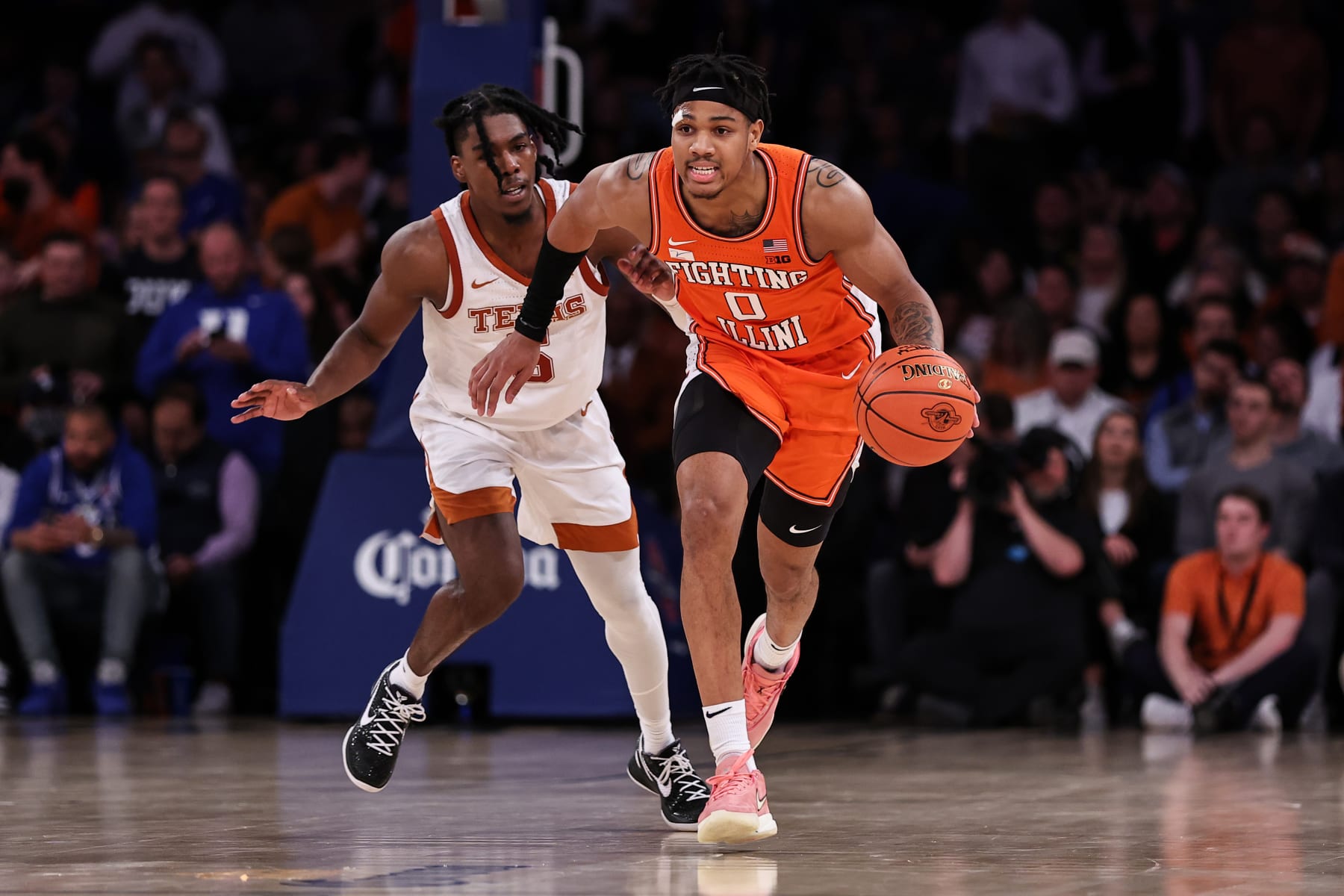
Stock update: Potential first-rounder
While a shooting slump has hit Terrence Shannon Jr., he's resurfaced in the draft discussion playing a more exciting role with his new team.
Illinois has given him a green light, and he's upped his per-game average to 17.8 points (from 10.4 points with Texas Tech in 2021-22) by firing more threes and having more success in ball-screen situations (1.0 points per possession).
An improved pull-up game (47.8 percent) has helped, both with his current production and NBA projection. Shannon isn't an advanced ball-handler, so his ability to shoot off the dribble has made it easier to score. He graded in the 97th percentile last year as a spot-up player, and now he's become a bigger threat on the ball.
Defensive potential has also always been a selling point to Shannon, who's 6'6" and quick, with a 215-pound frame that's capable of matching up against 4s.
While scouts are still waiting to assess the legitimacy of his improved offense and jump shot, he's at least back on the radar as a potential three-and-D wing or bench spark.
Amen Thompson (Overtime Elite, PG/SG, 2003)
Stock update: Steady with a No. 3 overall ceiling
Being different typically fuels intrigue, and as a 6'7", 100th percentile athlete and playmaker, Amen Thompson's unique archetype continues to take shape.
Averaging 16.9 points and 5.8 assists on 67.1 percent shooting inside the arc, he's building a top-five case around his creation upside and playmaking with lightning-quick dribble moves and passing IQ off the dribble. Thompson has showcased special stop-start burst and change of direction to slice through gaps, with the springs to elevate and finish and the vision to set up teammates.
It's that 2-of-18 start from three that remains an obvious talking point in scouting conversations. Scouts have to determine the likelihood of him improving and what it will mean for his scoring if his shot remains this big of a weakness.
Still, Thompson does possess a seemingly translatable knack for creating advantages in transition and the point of attack, generating easy-basket opportunities, passing and defending.
While scouts believe that Nos. 1 and 2 overall are already decided, an unmatchable combination of size, athleticism and playmaking could give Thompson an edge at No. 3.
Ausar Thompson (Overtime Elite, SG/SF, 2003)
Stock update: Top 10 with top-five ceiling
Superhero athletic abilities have and will continue to buy Ausar Thompson time when it comes to his skill development and decision-making. But he has helped himself so far in season No. 2 with Overtime, mostly by showing signs of shooting improvement.
He's made at least two threes in four of seven games, averaging 18.6 points by mixing in more shot-making to complement the transition and attacking offense. Any evidence of Thompson's jumper looking smoother may be deemed a big deal, considering how dangerous his outrageous quickness and bounce are for generating easy baskets.
While Thompson isn't the most polished creator, he's still finding ways to separate with quick-twitch moves off the dribble and elevation/hang time in the lane. We've seen some budding shot-making versatility with mid-range shots and floaters.
With lightning feet, 6'7" size and wild leaping ability, he also covers defensive ground and airspace exceptionally fast (combined 4.0 steals and blocks), giving him a good case as the draft's most disruptive wing stopper and defensive playmaker.
At the moment, he's considered to be grouped into a tier with roughly 10-12 prospects after Victor Wembanyama and Scoot Henderson. Realistically, how convincing his shooting development looks over these next few months will dictate how close he gets to the No. 3-5 range on draft boards.
Kel'el Ware (Oregon, C, Freshman)

Stock update: No. 1-ranked NCAA center prospect
Kel'el Ware's production and flashes have flickered early, as he's mixed some exciting performances with quiet ones. But at this stage, NBA teams are putting more stock into the 7-footer's skill set and potential trajectory and not necessarily his consistency as a 210-pound freshman on a team with two senior starting bigs.
Aside from possessing excellent finishing tools and a quick second jump for putbacks, post scoring has been his most effective form of offense. His bag contains a little more than just basic hooks, and he's flashed the touch to convert off tougher fallaways and angles.
His eight three-point makes and 27 attempts highlight his shot-making potential and shooting confidence. While his jumper is far from reliable, he clearly has the range and mechanics to operate as a stretch 5, a possible big deal for an easy-basket target and rim protector.
With an early 8.0 percent block rate, Ware has showcased the type of mobility and length for NBA teams to picture a disruptive defender in pick-and-roll coverage and around the basket. His basketball IQ has also popped on certain rotations.
Playing behind Quincy Guerrier and N'Faly Dante, Ware has a lack of physicality, creation and bankable shooting that has led to fluctuating minutes and impact. The team that drafts him will presumably put him on a longer-term development plan. But teams should be willing to stay patient for a center who appears to be on track to stretch the floor, defend the paint and offer some skill around the key.
Victor Wembanyama (Metropolitans 92, PF/C, 2004)
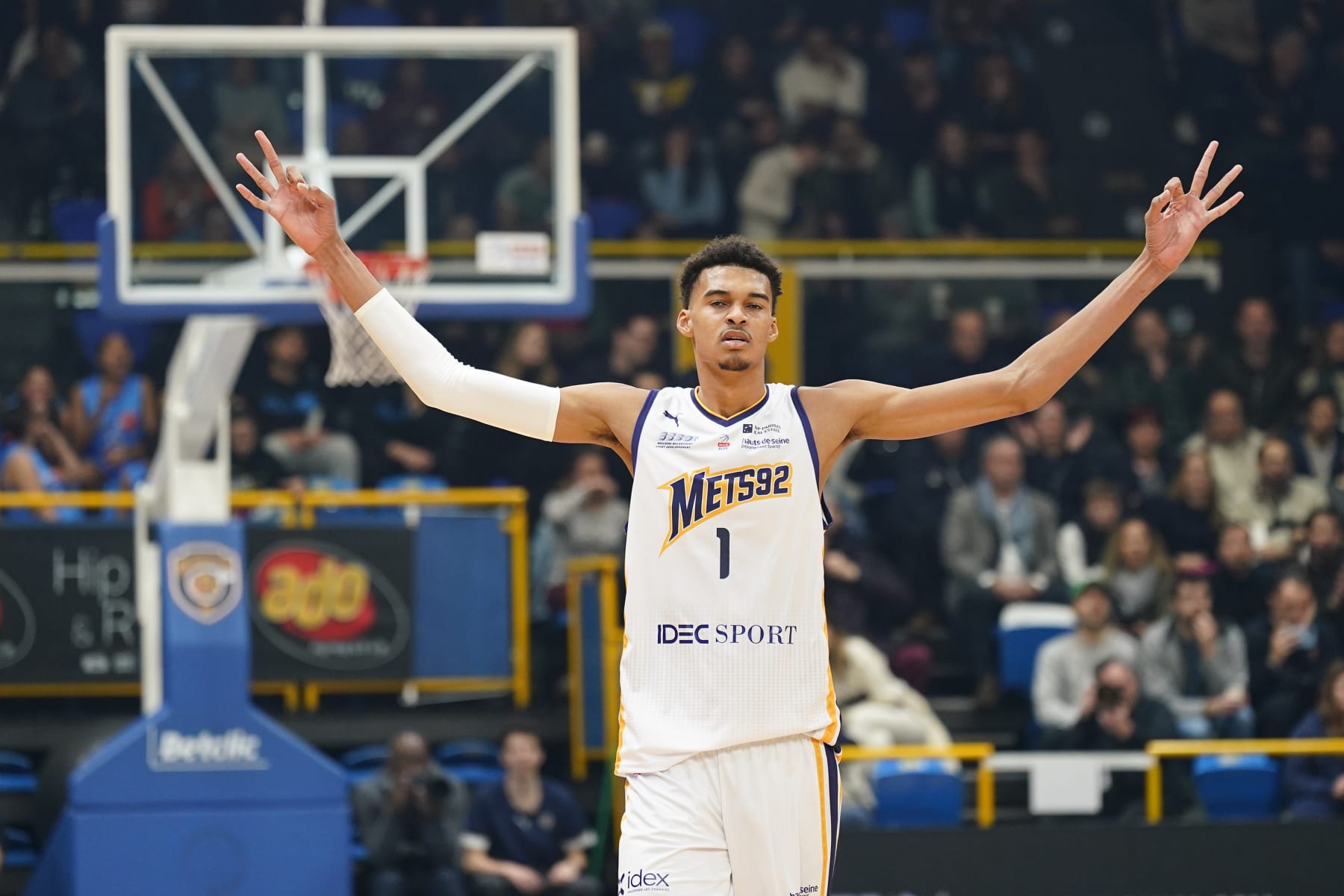
Stock update: Heavy No. 1 overall favorite
There doesn't appear to be any debate over the 2023 draft's No. 1 prospect. Victor Wembanyama has run away with that title early, averaging 23.6 points, 9.4 rebounds, 2.8 blocks, 2.5 assists and 1.4 threes per game in France's top league.
Consistent domination and fluid skill execution have scouts convinced his effectiveness will translate from Europe to the NBA. His ball-handling to self-create and shot-making ability/versatility appear unprecedented for a 7'4" player who'll clearly have no trouble getting clean shots off or generating easy-basket chances.
With Wembanyama leading the league in blocks (as well as scoring and rebounding), he's a clear reason why Boulogne-Levallois ranked No. 1 in defensive rating.
He possesses the type of mismatch tools, three-level scoring and defensive ceiling to double as a team's No. 1 option and game-changing defensive anchor.
Nitpicking Wembanyama means pointing to questionable physicality, his 28.8 percent three-point rate and a frame/limbs that may be vulnerable to breaking down. But at 18 years old, he's added bulk since last season, made 17 threes in 12 games and has no red flags regarding his health.
Jalen Wilson (Kansas, SF, Senior)
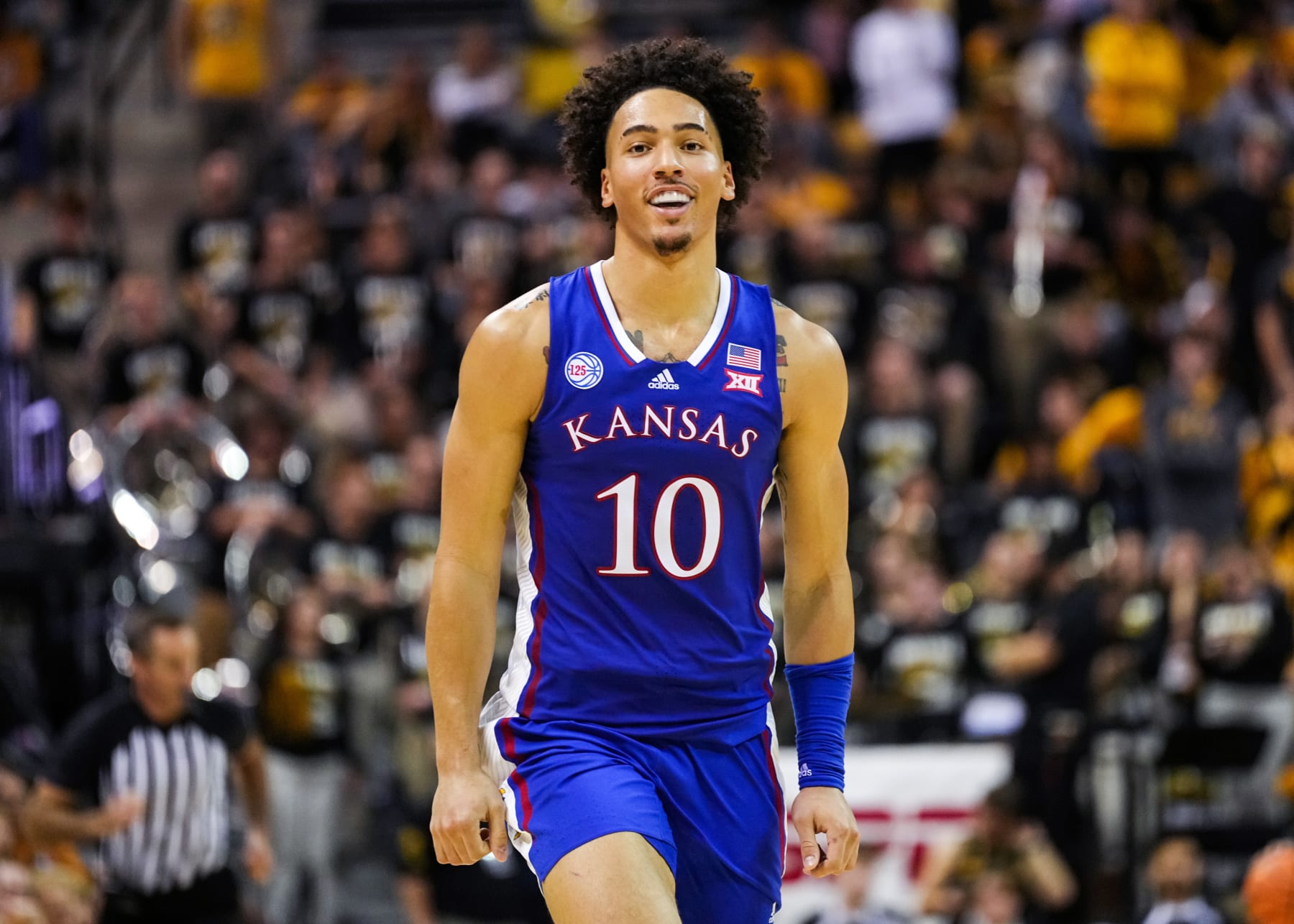
Stock update: Potential first-rounder
Improved shooting has put Jalen Wilson back into the draft picture. It's led to a big jump in scoring and some renewed interest in his potential to add offensive versatility to an NBA front line.
After making 40 half-court jumpers all season in 2021-22, he's up to 36 already this campaign, showing both more range (2.3 3PTM) and skill on his pull-up (40.6 percent).
Interesting at baseline for a 6'8" wing who can initiate breaks and handle in ball-screen situations, he's looked like a more well-rounded scorer and believable pro prospect this year.
Attacking still seems like his signature strength, as Wilson continues to show he can locate and drive through gaps and finish with both both strength, adjustments and touch shots.
Averaging 9.4 rebounds and 3.2 assists per game, he's provided Kansas with ancillary production, especially by leveraging his heavy usage into secondary playmaking.
The Jayhawks have gotten mixed defensive performances from Wilson over the years. His age (22) and his limited explosiveness also lower his perceived NBA ceiling. But if he sustains his current level of play through March, scouts could buy the idea of a physical combo forward who can put some pressure on defenses with transition, driving and shot-making.
Late Starts
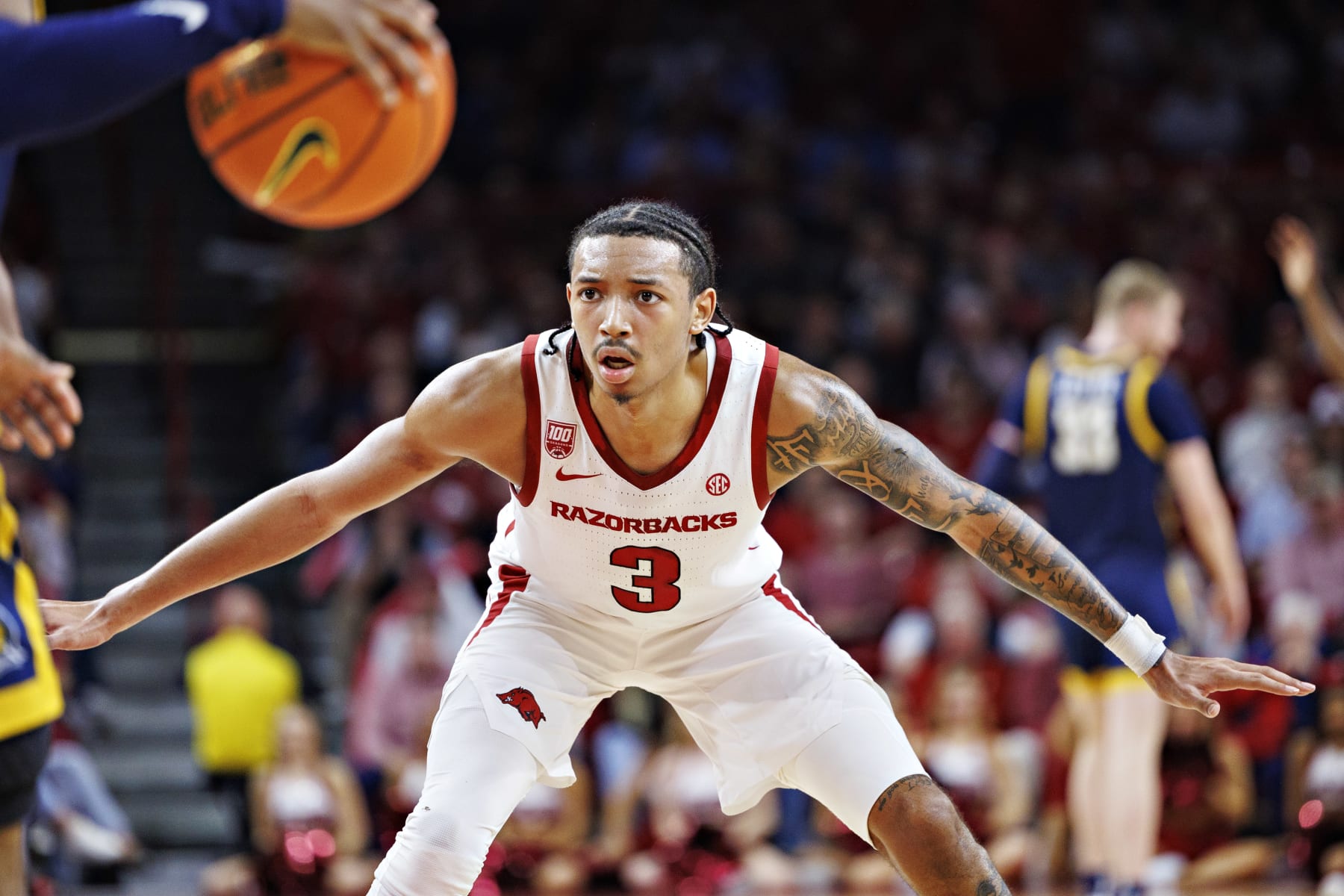
Nick Smith Jr. (Arkansas, PG, Freshman)
Smith has averaged 19.7 points per game, scoring on and off the ball, since playing just six minutes in his debut after returning from a knee injury. Early signs show an ultimate combo guard who has a pull-up and floater, the shiftiness to create, a high playmaking IQ and a comfort level shooting and cutting off the ball.
Athletic/physical limitations don't appear to be concerning, especially given how advanced he's looked finishing below the rim. We're still waiting to learn more about his playmaking IQ and willingness to facilitate, but from a pure skill perspective, he's looking the like the sharpest guard in the draft.
Dariq Whitehead (Duke, SG/SF, Freshman)
Shooting 36.9 percent from the field while playing just 16.1 minutes through nine games, Whitehead has struggled with his shot and decision-making. He gets a pass because of a late start and a big adjustment, having to play mostly a spot-up role without the luxury of getting typical starter playing time.
Visions of a pro scorer have still been there, with Whitehead looking best pulling up into jumpers and attacking defenders in space. At 6'7", 220 pounds, he's demonstrated impressive strength at both ends, self-creation and tough shot-making for an 18-year-old.
Questions have popped up, though, mostly around his low-percentage shot selection and poor touch/feel finishing drives (8-of-20 on half-court layups). Scouts will need more time to assess him as he gains back his comfort level and confidence, which appears to be rising after last Saturday's 15-point game against Maryland-Eastern Shore.
Cam Whitmore (Villanova, SG/SF, Freshman)
Summer flashes of improved ball-handling and shooting have carried over to Villanova. While he's also showcased his signature explosion and power, his step-back jumpers and countermoves into drives are what should continue to create top-five hype. We haven't seen any playmaking from Whitmore yet, which may lead to scouts to label him as more of a forward than a guard. But it looks like the freshman possesses an optimal punch of strength, burst and shot-making for a big wing or small-ball 4 at the next level.
Freshmen to Monitor
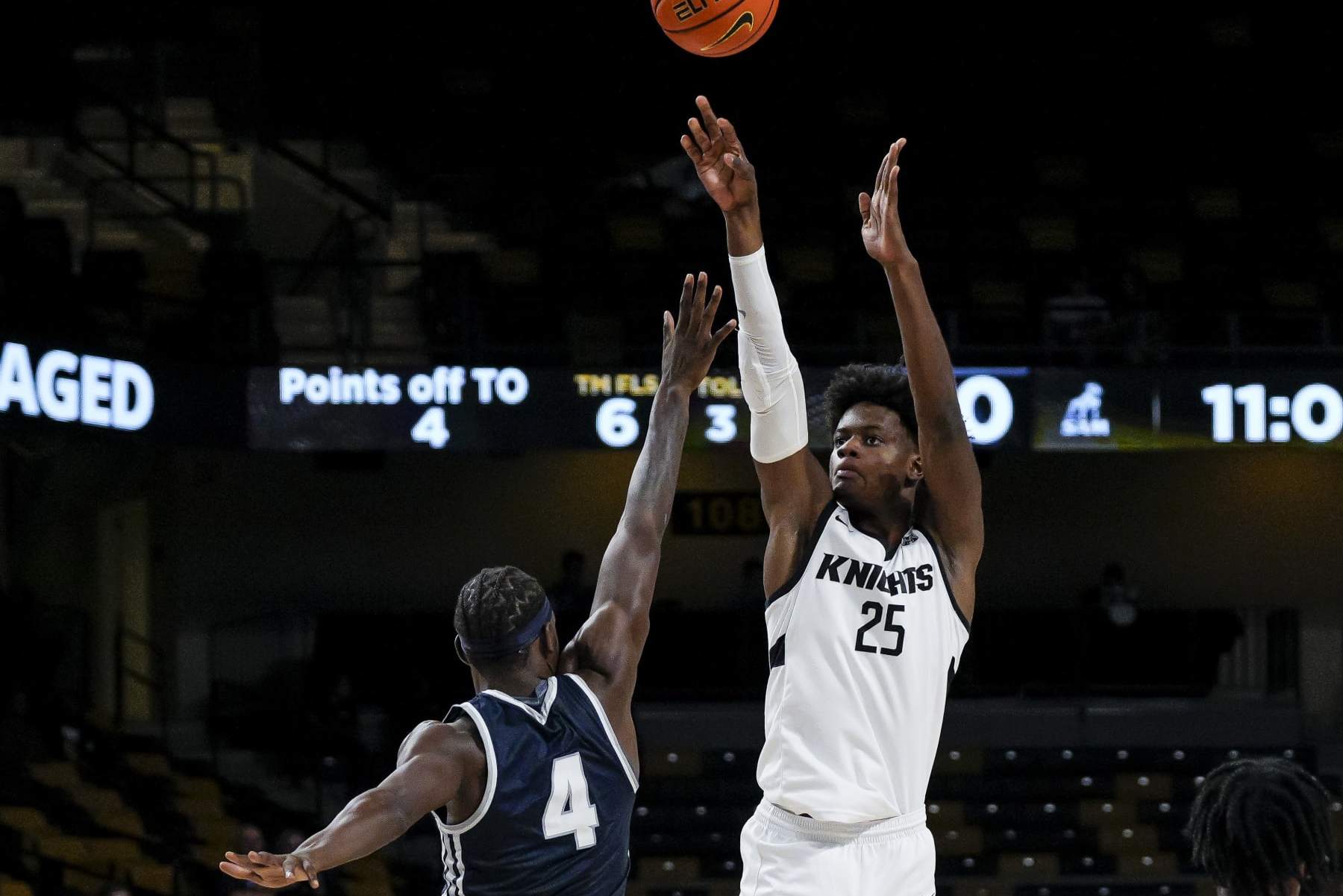
Noah Clowney (Alabama, PF)
Clowney's recent surge in production has highlighted the type of versatility NBA teams covet in power forwards. The 6'10" freshman made a combined seven three-pointers against Houston and South Dakota State. He finish a handful of drives past closeouts. And so far on the season, he's averaging 14.5 boards and 2.6 blocks per 40 minutes, providing consistent activity around the basket.
Taylor Hendricks (UCF, PF)
The nation's fourth-leading freshman scorer (15.7 PPG), Hendricks has been easy to identify with his production, athletic finishes and shooting. Though not a creator, he's tapped into his athleticism and shot-making to rack up 14 dunks, 20 threes and 17 blocks in 10 games.
Judah Mintz (Syracuse, SG)
Averaging 15.0 points, 4.0 assists and 2.0 steals, Mintz has stood out by pressuring opponents with his ball-handling wiggle, off-the-dribble shot-making and defensive energy. At 172 pounds, his lack of three-point shooting (3-of-18) is problematic, but an excellent mid-range game and 78.0 percent free-throw rate point to shooting touch and room to improve.
Brice Sensabaugh (Ohio State, SG)
Though not an exciting athlete or creator, Sensabaugh is efficiently scoring (48.8 percent FG) at a ridiculous rate (14.1 points in 19.3 minutes per game). It's worth putting stock into his effectiveness, even if the eye test questions his lack of explosiveness and heavy 235-pound frame for an NBA wing. He's consistently found ways to score, mostly by making catch-and-shoot threes (53.6 percent), pull-ups (50 percent)) and picking the right spots to attack closeouts and use his physicality/instincts on drives.
Stats courtesy of Synergy Sports, Sports-Reference.com, RealGM.com.


